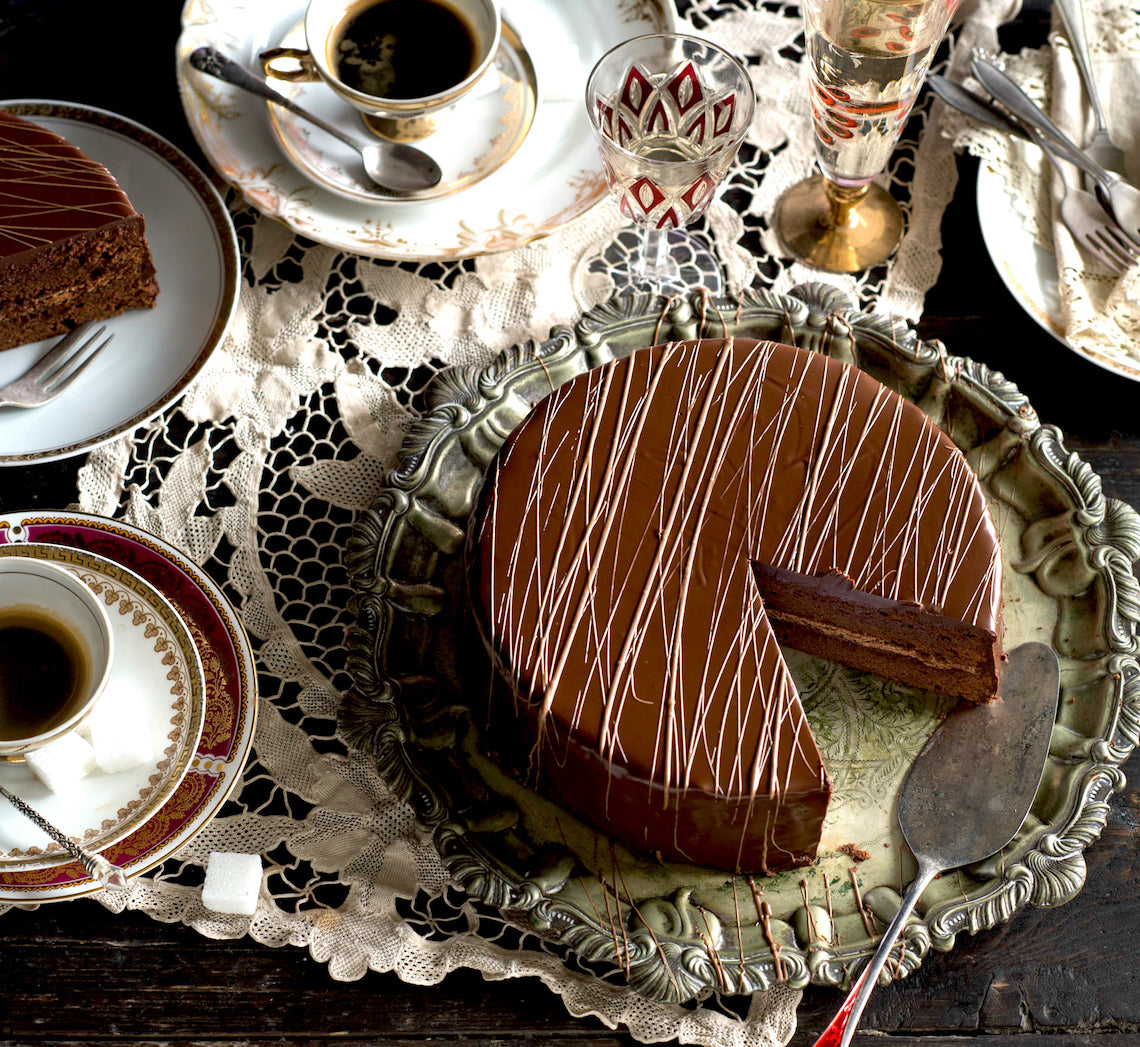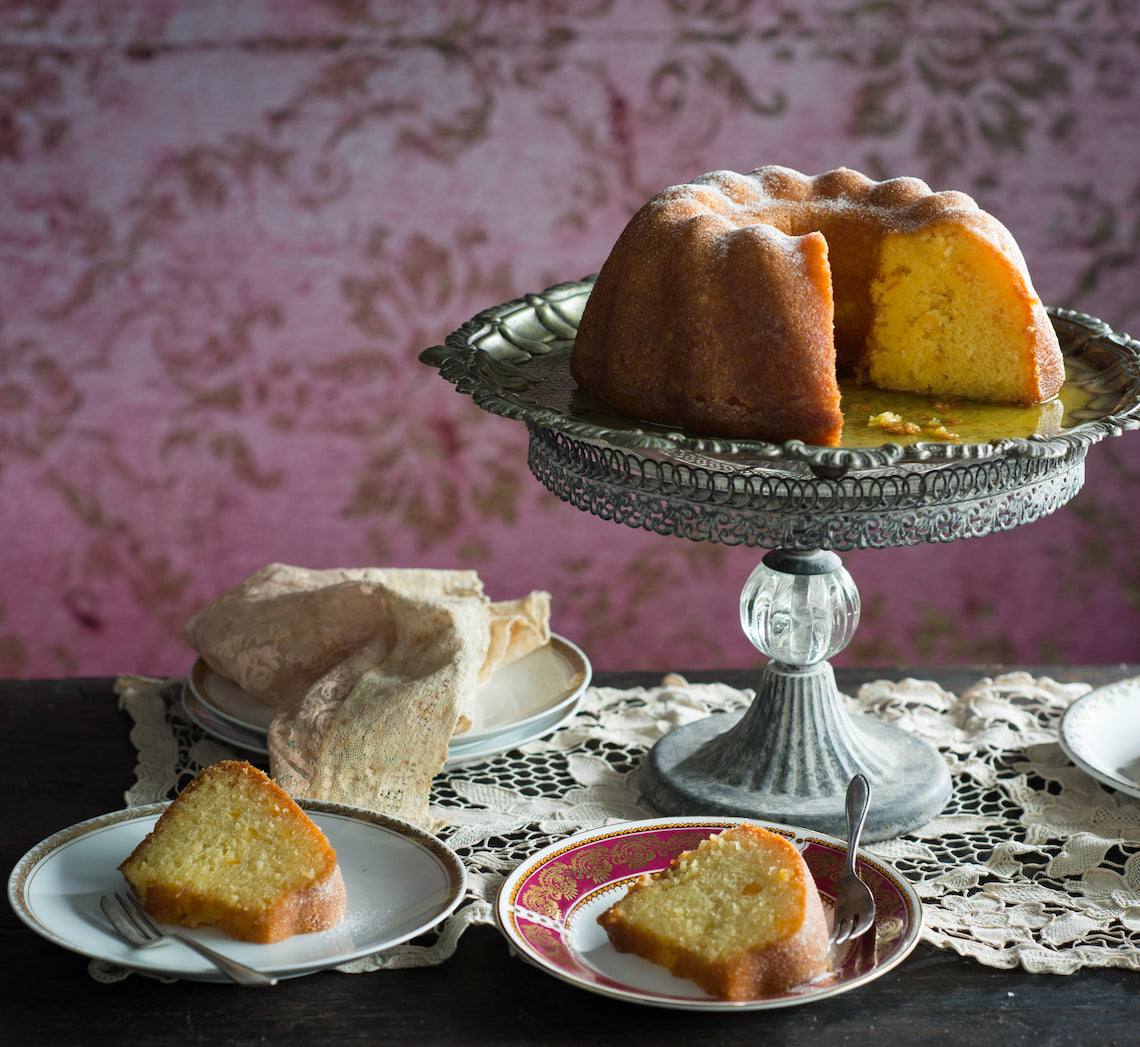- home
- BAKERECIPES
BakeRecipes
Bringing real baking into your home with deliciously simple recipes.

Prep 40min (+1hr cooling and 2hr standing time)Bake 30minMakes 10-12 serves
Possibly the most famous cake in the world, and certainly the pride of Austria, Sacher Torte was created by Franz Sacher, a 16-year-old apprentice stepping in for an ill head chef, to impress the guests of Prince Wenzel von Metternich. And as they say, the rest is now cuisine history. This elegant, rich and enticing cake is now loved the world over.
Ingredients
Melted butter, to grease
125g unsalted butter, softened
125g (1 cup) icing sugar, sifted
1½ teaspoons natural vanilla essence or extract
6 eggs, at room temperature, separated
175g good-quality dark chocolate (54% cocoa), chopped, melted and cooled to room temperature
110g (¾ cup) plain flour
110g (½ cup) caster sugar
85g (¼ cup) apricot jam, warmed and sieved
40g good-quality milk chocolate, melted, to decorate
Thick or whipped cream, to serve
Chocolate Glaze
300g good-quality dark chocolate (54% cocoa)
60g butter, cubed
Method
- Preheat oven to 180°C (160°C fan-forced). Brush 2 x shallow 20cm round cake tins with melted butter to grease and line the bases with rounds of non-stick baking paper.
- Use an electric mixer to beat the butter, icing sugar and vanilla until pale and creamy. Add the egg yolks and beat until well combined and creamy. Beat in the cooled melted chocolate until well combined. Use a large metal spoon or spatula to fold in the flour until just combined.
- Use an electric mixer with a whisk attachment to whisk the egg whites in a large clean, dry bowl until soft peaks form. Add the caster sugar and whisk on medium-high speed until thick and glossy and all the sugar has dissolved (see Baker’s tip). Add half the egg white mixture to the chocolate mixture and use a large metal spoon or spatula to fold in to ‘loosen’ the mixture. Add the remaining egg white mixture and fold until just evenly combined.
- Divide the mixture evenly between the tins and use the back of a spoon to smooth the surface. Bake in preheated oven for 30 minutes or until a skewer inserted into the centre of the cakes comes out clean. Stand in the tins for 10 minutes before turning onto a wire rack to cool (this will take about 1 hour).
- Once cool, spread one cake layer with the warmed sieved jam and then top with the second layer, bottom side up. Place the cake on a wire rack over a tray and set aside while making the chocolate glaze.
- To make the chocolate glaze, combine the chocolate and butter in a heatproof bowl and place over a saucepan of barely simmering water (make sure the base of the bowl doesn’t touch the water). Stir occasionally until just melted and combined. Use a plate knife to spread a little of the glaze over the outside of the cake to form a ‘crumb coat’ and to even the surface. Place in the fridge for 20 minutes or until set. Remove from the fridge and carefully pour over the rest of the glaze, allowing it to run down the sides of the cake to coat evenly. Tap the cake, still on the rack, gently on the tray to remove any air bubbles and to settle the glaze. Use a fork to drizzle the milk chocolate over the top of the cake to decorate. Set aside for 2 hours or until the glaze sets. Serve cut into small wedges with cream.
Baker’s Tips
- To test if all the sugar has dissolved, rub a little of the egg white and sugar between two fingers – you will be able to feel if there is still undissolved sugar. Whisk for another minute if not completely dissolved before testing again.
- This cake will keep in an airtight container at room temperature for up to 4 days.
This recipe is from Anneka's SBS Food online column, Bakeproof: Austrian Baking.
CLICK HERE for more Bakeproof columns and recipes.
Photography by Alan Benson.

Prep 30minBake 50minMakes 12 serves
Originally a cake of the poor, Gugelhupf is a firm staple in Austria and is of the most popular afternoon tea offerings especially in the local kafes (coffee houses). But, as Emperor Franz Josef preferred, it is often eaten for breakfast. There seem to be as many variations of this yeast or sponge-based cake as there are days in the year – this one has a luscious orange syrup to keep it lovely and moist.
Ingredients
20g (¾oz) butter, melted, combined with 1½ teaspoons plain flour, to grease
250g (9oz) unsalted butter, at room temperature
125g (1 cup/4½oz) icing sugar, sifted
2 teaspoons natural vanilla essence or extract
4 eggs, at room temperature, separated
250g (1⅔ cups/9oz) plain flour, plus extra to dust
1½ teaspoons baking powder
Good pinch of salt
75g (2¾oz) candied orange rind
110g (½ cup/4oz) caster sugar, plus 1 tablespoon extra to sprinkle
Orange Syrup
250ml (1 cup/9fl oz) strained fresh orange juice
145g (⅔ cup/5oz) caster sugar
50ml (2½ tablespoons/1¾fl oz) orange liqueur
Method
- Preheat oven to 180°C/350°F (160°C/315°F fan-forced). Brush a 2.5 litre/5.25pt (24cm/ 9½in diameter) bundt tin with the melted butter and flour mixture to grease.
- Use an electric mixer to beat the butter and icing sugar and vanilla until pale and creamy. Add the egg yolks and beat until well combined and creamy.
- Sift together the flour, baking powder and salt and then stir through the candied rind. Use an electric mixer with a whisk attachment to whisk the egg whites with the salt until soft peaks form. Add the caster sugar and whisk until thick and glossy. Use a large metal spoon or spatula to fold the egg whites into the butter mixture until evenly combined. Then gently fold in the flour mixture until just combined.
- Spoon the mixture into the prepared tin and smooth the surface with the back of a spoon. Bake in preheated oven for 45-50 minutes or until a skewer inserted comes out clean. Stand in the tin for 5 minutes before turning onto a plate with a lip.
- Meanwhile, to make the Orange Syrup, combine the orange juice and sugar in a small saucepan and stir over medium heat until the sugar dissolves. Bring to a simmer and then remove from the heat. Stir in the orange liqueur.
- Slowly pour the hot syrup over the hot cake, allowing it to soak in as much as possible. Sprinkle with the extra caster sugar and cool to room temperature (this will take about 1 hour). Serve in slices for morning or afternoon tea or dessert on its own or with cream.
Baker's Tips
- This cake will keep in an airtight container at room temperature for up to 3 days.
This recipe is from Anneka's SBS Food online column, Bakeproof: Austrian Baking.
CLICK HERE for more Bakeproof recipes.
Photography by Alan Benson.






